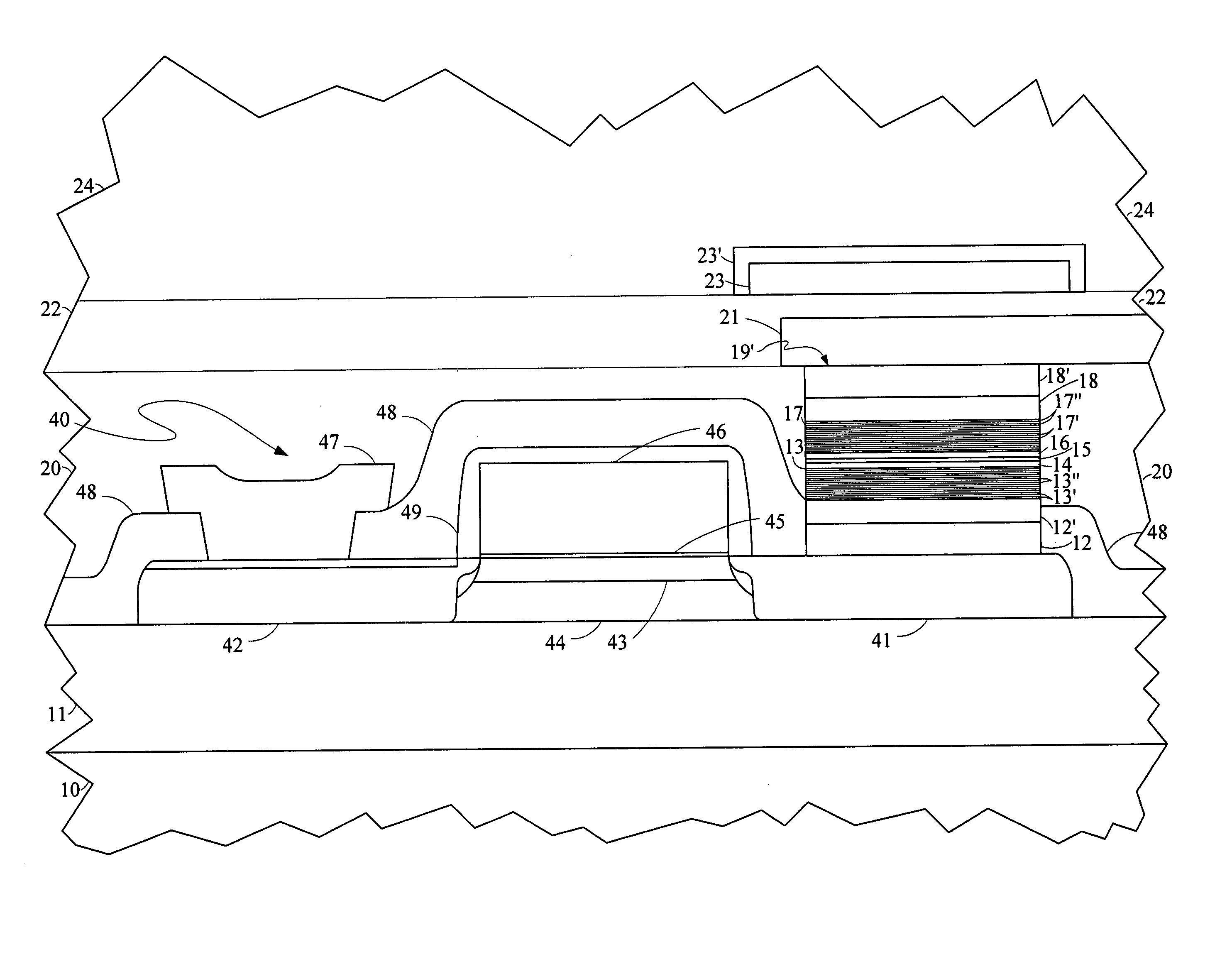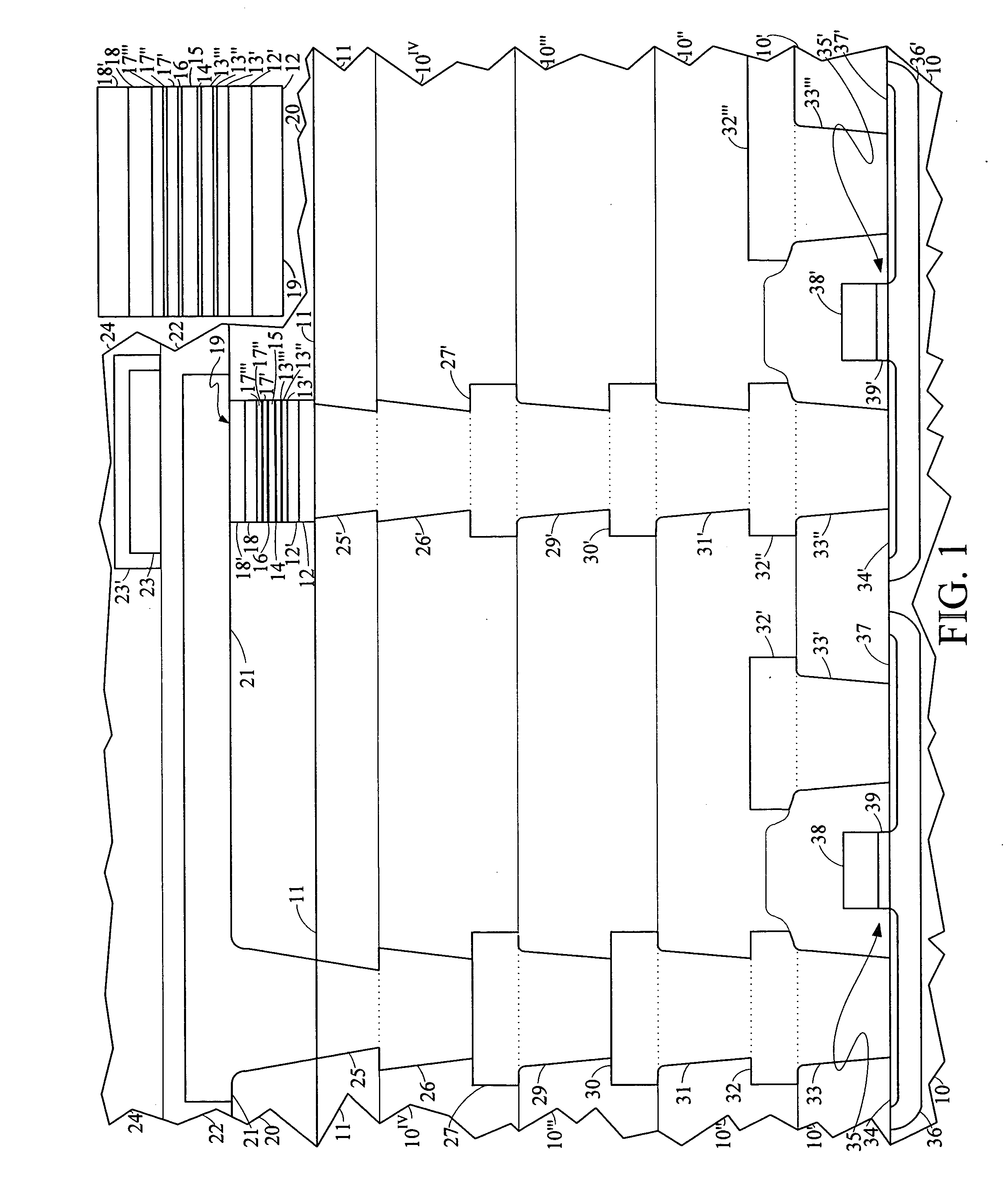Magnetoresistive memory SOI cell
a magnetic memory and soi cell technology, applied in the field of ferromagnetetic thin film structure, can solve the problems of cell more subject to magnetic state, difficult production of memory chips in integrated circuit wafers with high yields, and complex magnetic environmen
- Summary
- Abstract
- Description
- Claims
- Application Information
AI Technical Summary
Benefits of technology
Problems solved by technology
Method used
Image
Examples
Embodiment Construction
[0057] The implementation of magnetoresistive memory cells using thermally assisted data storage arrangements can require operation thereof in relatively difficult environments. The maximum temperature rise required in some possible implementations is about 200° C. This total required temperature rise is due to the difference between the ambient temperature of the chip and the maximum temperature required to disrupt the magnetic ordering occurring in the cell magnetic material at lower temperatures. The minimum ambient temperature could be 0° C., or even colder, in some situations in which the memory cells are required to operate, and if the maximum order disruption temperature of the material is 200° C., then the total temperature rise needed to be caused by the establishment heating currents through the cells would have to be at least 200° C. This magnitude of needed cell temperature increases for the storage of data therein is difficult to obtain with a fast rise time, realizable...
PUM
 Login to View More
Login to View More Abstract
Description
Claims
Application Information
 Login to View More
Login to View More - R&D
- Intellectual Property
- Life Sciences
- Materials
- Tech Scout
- Unparalleled Data Quality
- Higher Quality Content
- 60% Fewer Hallucinations
Browse by: Latest US Patents, China's latest patents, Technical Efficacy Thesaurus, Application Domain, Technology Topic, Popular Technical Reports.
© 2025 PatSnap. All rights reserved.Legal|Privacy policy|Modern Slavery Act Transparency Statement|Sitemap|About US| Contact US: help@patsnap.com



